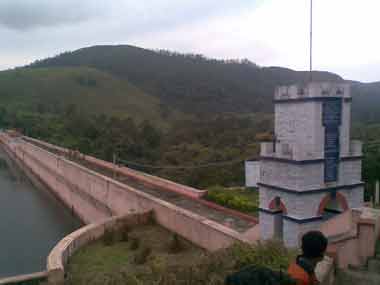Unprecedented floods have hit the state of Kerala for the last 12 days, killing over 350 people and causing losses worth nearly Rs 20,000 crore, as all 14 districts of the state have been placed under red alert before it was relaxed once water started receding. One of the chief reasons for this was the fact that for the first time in history, 35 out of the state’s 39 dams were thrown open. As reported by News18, these 35 dams included Mullaperiyar, Cheruthoni, part of Idukki reservoir and Idamalayar, which together wreaked havoc in the downstream areas. Dam Safety Bill, 2018 Given this precarious situation, how would the Dam Safety Bill have impacted the situation on the ground in Kerala? The Union Cabinet in June this year had cleared the proposal for introduction of the Dam Safety Bill in Parliament. The objective of the bill is to “help develop uniform, countrywide procedures for ensuring the safety of dams”. [caption id=“attachment_4999891” align=“alignleft” width=“380”]  File image of the Mullapperiyar Dam. Courtesy: Wikimedia Commons[/caption] The draft bill aims to provide proper surveillance, inspection, operation and maintenance of all specified dams in the country to ensure their safe functioning. The bill also proposes the setting up of the following: National Committee on Dam Safety, State Committee on Dam Safety, National Dam Safety Authority (NDSA) and State Dam Safety Authority (SDSA). Together, the four will ensure dam safety policies, surveillance, inspection, operation, maintenance and safe functioning of all specified dams. Furthermore, it also envisages the NDSA as a body that will implement policies, guidelines and standards for dam safety in the country. A national-level database of all dams in the country would be maintained by the NDSA, while the SDSA will look into their safety aspects at the state level. Mullaperiyar Dam and the tussle between Kerala and Tamil Nadu The formation of the NDSA and the SDSA might have helped resolve at least one of the long-pending contentious issues between Kerala and Tamil Nadu: That over the status of the Mullaperiyar Dam. The over a century-old dam, is located in Kerala’s geographical territory. But as reported by Sify, it’s operated by Tamil Nadu under an agreement it signed with the erstwhile British government for purposes of irrigation. The agreement granted full rights to Tamil Nadu, and the dam was built on the Periyar river on Kerala territory to divert water eastwards and feed the arid districts of Tamil Nadu. Ironically, the late Tamil Nadu chief minister J Jayalalithaa was opposed to the Dam Safety Bill over concerns that it would dilute Tamil Nadu’s power over the Mullaperiyar Dam. And this is not the only dam in Kerala territory that’s controlled by Tamil Nadu. The Indian Express reported that Parambikulam, Thunakadavu and Peruvaripallam are all owned by Tamil Nadu. The tussle between the two states regarding Mullaperiyar reached the Supreme Court in 2014, after Tamil Nadu sought to increase storage of the dam, while Kerala opposed it citing safety threats. Eventually, a Supreme Court team inspected the dam and confirmed that the dam was safe, the report added. Once the bill is passed and becomes a law, there will be respective SDSAs in both Kerala and Tamil Nadu to monitor the tussle between the two states regarding the nature of the dams. And they will be overseen by a NDSA that will look into unresolved dam-related issues.
The Dam Safety Bill aims to provide proper surveillance, inspection, operation and maintenance of all specified dams in the country to ensure their safe functioning.
Advertisement
End of Article


)

)
)
)
)
)
)
)
)



